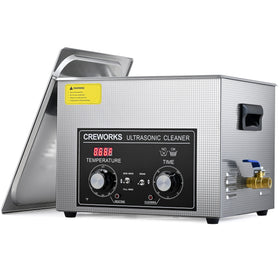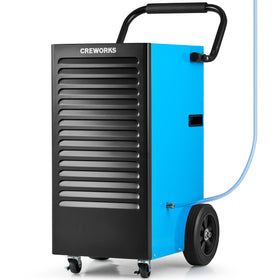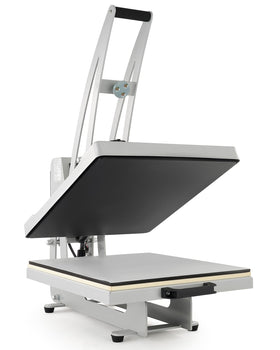With over 10000+ orders
With over 10000+ orders
In the area of cleaning technology, ultrasonic cleaners stand out as a revolutionary and efficient method for achieving pristine cleanliness. These devices utilize the power of ultrasonic waves to tackle dirt, grime, and contaminants on a microscopic level. This guide will explore what to put in ultrasonic cleaners to help you master its diverse applications.
Ultrasonic cleaners are sophisticated devices that use high-frequency sound waves (ultrasonic waves) to create microscopic bubbles. These bubbles will implode once they touch the surface of items, creating powerful waves that can remove contaminants such as dirt, grease, and other particles. The process is known as cavitation, and it provides a thorough and efficient cleaning method without the need for abrasive scrubbing.
Ultrasonic cleaners have become a staple in the jewelry industry for their ability to clean intricate pieces with precision. From diamond rings to timepieces, these cleaners can reach most nooks and crannies, ensuring a sparkling finish without causing damage. For example, sapphire or ruby rings can be cleaned by using ultrasonic jewelry cleaners for efficient and effective results.
Delicate electronic components, such as circuit boards and small parts, benefit from ultrasonic cleaning. The non-abrasive nature of this method can ensure that sensitive electronics remain undamaged while being thoroughly cleaned. However, it's crucial to follow proper drying procedures to prevent moisture damage.
In the healthcare industry, where cleanliness is paramount, ultrasonic cleaners can be used to sterilize and clean medical instruments. The technology can ensure that the tiny crevices are free from bacteria and contaminants, which is essential for maintaining high hygiene standards. Ultrasonic cleaning can be a preliminary step before sterilization, providing an effective way to clean instruments such as dental tools and some surgical instruments.
Mechanics and automotive enthusiasts will like the efficiency of ultrasonic cleaners in removing grease and grime from engine parts, carburetors, and other components. This method is particularly useful for intricate parts that are challenging to clean manually. Therefore, it not only enhances performance but also extends the lifespan of automotive components.
Cameras, microscopes, and other optical devices can benefit from ultrasonic cleaning to remove dust and fingerprints. The gentle yet effective cleaning process ensures that lenses remain in optimal condition.
By understanding the versatility of ultrasonic cleaners and knowing why they are becoming popular, why not get an ideal ultrasonic cleaner for yourself if you don;t have one now? While there are numerous professional ultrasonic cleaners available for specific industries and applications, finding one that can handle a variety of items for everyday use can be more helpful. The following two products are recommended to you.
1. CREWORKS ULTRASONIC CLEANER WITH HEATER, TIMER, AND DUAL MODE 6L
Our 180W ultrasonic cleaner uses 40kHz sound waves to agitate the water in the 6L (1.6 gal.) basin. With the enhanced 500W heating power, our ultrasonic cleaning machine provides greater strength. The intuitive control panel also allows for standard 1-30 minutes or extended 1-99 minutes timed cleaning, making it ideal for various cleaning needs.
2. CREWORKS ULTRASONIC CLEANER WITH DIGITAL TIMER AND HEATER 10L
This 240W ultrasonic cleaner has 40kHz of frequency and a 10L(2.6-gallon) basin. It also has up to 300W of heating for more powerful cleaning. Simply fill the tank with water, place your items in the basket, set the temperature between 20 and 80°C (68 and 176°F), and the timer from 1 to 30 minutes on the easy-to-use digital control panel. Press the power button, and the ultrasonic cleaner will start.
Ultrasonic cleaners have revolutionized cleaning tasks across various industries. Their ability to provide efficient, gentle, and consistent cleaning makes them indispensable. You can use ultrasonic cleaners for jewelry, electronics, healthcare, and so on. As technology advances, ultrasonic cleaners will play an even more significant role. Knowing what to put in ultrasonic cleaners will help you maximize their benefits and achieve the best results.











